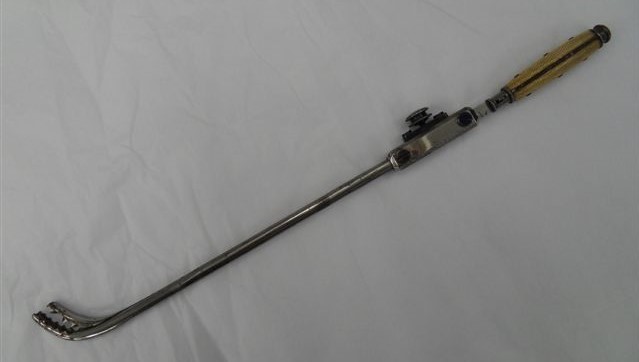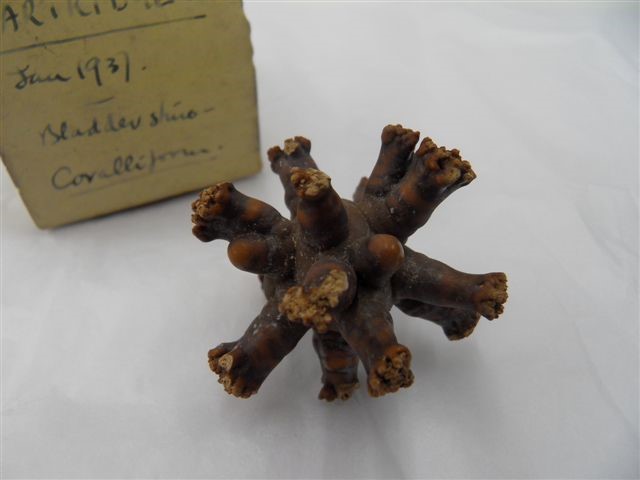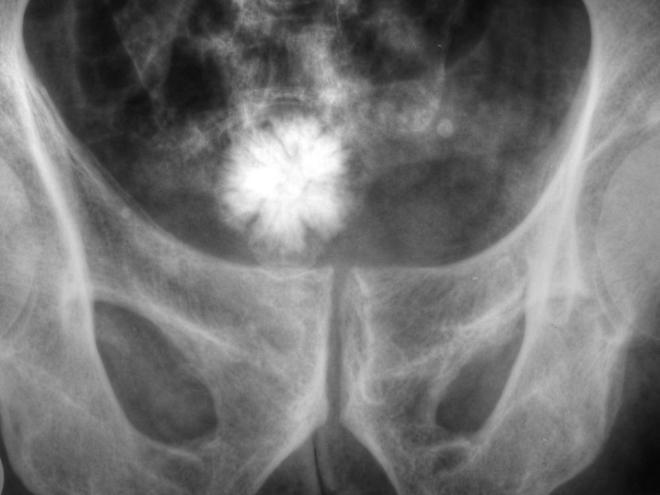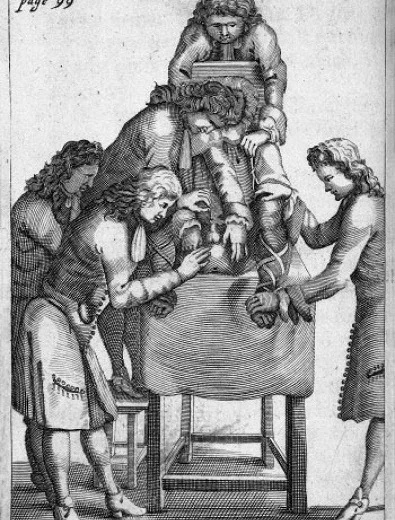Spare a Thought for Samuel Pepys!
Posted on: 13 November 2020 by Leonie Sedman, Curator of Heritage & Collections Care in 2020

‘What is the purpose of this strange looking instrument?’ I hear you ask.
This is a bladder stone crusher from the Medical Museum Collection, part of the University Heritage Collections. Note the ivory handles and the beautifully crafted mechanism.
This was not an instrument to be disposed of after one use. It was probably lucky to get a quick rinse before it was used on the next patient.
The image below is of the largest bladder stone in our collection – it is about the size of a £2 coin, and is of a type called a Jackstone urolith. It was discovered in 2004, with a number of long forgotten medical and scientific historic items in an object archive - when the Heritage Collections were first collated in preparation for the establishment of the VG&M.

Yes – it does look a bit like Covid 19

An X-ray of a Jackstone urolith in the bladder
Bladder stones can form when waste products or urine become concentrated and crystallise within the bladder. This painful condition can be the result of a number of medical conditions, including urinary infections, gout, an enlarged prostate, or even medications.
The famous 17th Century diarist Samuel Pepys suffered from bladder stones from a young age. By the time he was 25, his pain was so bad that he elected to have surgery – a process called lithotomy. The invention of the procedure is credited to Ammonius Lithotomus of Alexandria – in the 3rd century BC.

Image from A treatise of lithotomy, 1683 (Wellcome Library)
So with no anaesthetic available, and with no knowledge of the danger of germs, Pepys was held down while the surgeon made an incision in the perineum - and using an implement similar to the one in our collection - removed the stone (allegedly, the size of a tennis ball!).
The wound was dressed without stitches and left to heal itself. The fact that his operation was the first of the day probably saved Pepys’ life because the surgeon’s instruments - and his hands - were the cleanest that they were going to be all day. For many years afterwards, Pepys would hold a celebration on the anniversary of the successful operation.
Today, the process to remove bladder stones is much less invasive and certainly much less painful. Many types of bladder stone can be broken-up by the use of lasers or ultrasound waves, and those invasive operations that are necessary – are of course - conducted under general anaesthetic.
Fascinated? Read more in these links:
Keywords: Medical museum, Bladder Stone, Samuel Pepys, Surgery, Museum.